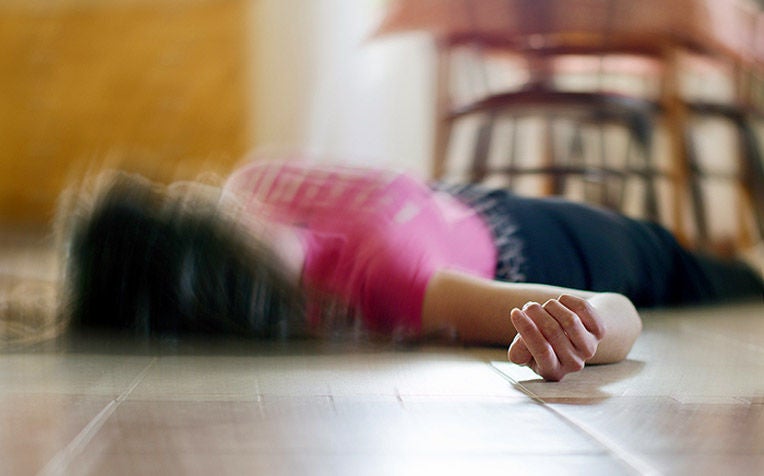
During a seizure (fit) , you can help the person by timing the attack, placing something soft under the person’s head and helping to loosen any tight neckwear. Also, be sure to remove any sharp or hard object that may be near the person.
Watching a seizure (or fit) can be frightening, but they rarely cause permanent damage to the brain.
A person who has had two or more seizures (or fits) may be diagnosed with epilepsy, and epilepsy can start at any age.
"Seizures are more common than what many realise – affecting nearly one in 10 people once in their lifetime. A seizure, or fit, happens when there is a sudden, uncontrolled burst of electrical activity in the brain. This causes temporary changes to body movements, sensations, thoughts, and emotions," explains Dr Sheila Srinivasan, Senior Consultant from the Department of Neurology at National Neuroscience Institute (NNI), a member of the SingHealth group.
“The person is not aware of what is happening or able to control the seizure. Once it ends, the person may feel extremely tired and experience muscle aches for several days,” she adds.
Do's and don'ts during a seizure (fit)
Nurse Clinician Peng Xuejuan, also from NNI, explains the simple do's and don'ts if someone has a seizure and when to call for emergency help.
 Do
Do
Stay calm.
Time the seizure.
Place something soft under the person’s head and loosen any tight neckwear.
Remove any sharp or hard object that may be nearby.
Turn the person on his/her left side (recovery position) when the seizure is over.
Stay with the person for at least 15 to 20 minutes after the seizure to ensure his/her breathing has normalised and he/she has regained consciousness.
 Don't
Don't
Place any object in the person’s mouth.
Restrain the person.
Move the person unless he/she is in danger (e.g. in the middle of the road).
Call an ambulance if
The seizure lasts longer than usual for that person.
The seizure lasts longer than five minutes and you are unsure how long seizures usually last for that person.
There are repeated seizures and the person remains unconscious.
It is the person’s first seizure.
An injury occurs during seizure or the seizure occurs in water.
The person is pregnant.
The person has difficulty breathing after the seizure.
About epilepsy and seizures
There are many different types of seizures. The most common and recognisable are tonic-clonic seizures, where the person may suddenly lose consciousness before the body starts jerking and shaking rapidly.
For a large proportion of patients, their seizures have no known cause. In some patients, seizures can occur because of damage to nerve cells in the brain that leads to electrical disturbances.
This can happen after a head injury, brain tumour, ischaemic or haemorrhagic stroke (which stops blood flow to the brain), poisoning, and infections.
Among some people with epilepsy, the risk of a seizure recurring can increase with certain external factors, such as:
Lack of sleep
Stress
Infections
Flashing lights
Loud noises
Alcohol consumption
Treatment for epilepsy includes identifying and avoiding triggers, as well as taking regular medication. Medication is not a cure; it can only help to control seizures.
In some cases, surgery may be needed to remove the part of the brain where the seizures begin. However, surgery is not suitable for everyone, and doctors will tailor the treatment plan according to the patient’s needs.

Epilepsy is a common neurological condition in Singapore, but it is often misunderstood. Join us at NNI’s public forum to learn the facts about epilepsy and how adults can live well with the condition. Adults living with epilepsy, their caregivers and the public are invited to attend!
|
Ref: J22
Check out other articles on brain diseases:
Brain Diseases: How to Detect Early
Epilepsy in Children: Causes, Treatment and What to Do During Seizures
Young Onset Dementia: How Early Does It Strike?
Dementia vs Normal Ageing: How to Tell the Difference
Protect Your Memory with Memory Care (only on Health Buddy app)
















 Get it on Google Play
Get it on Google Play